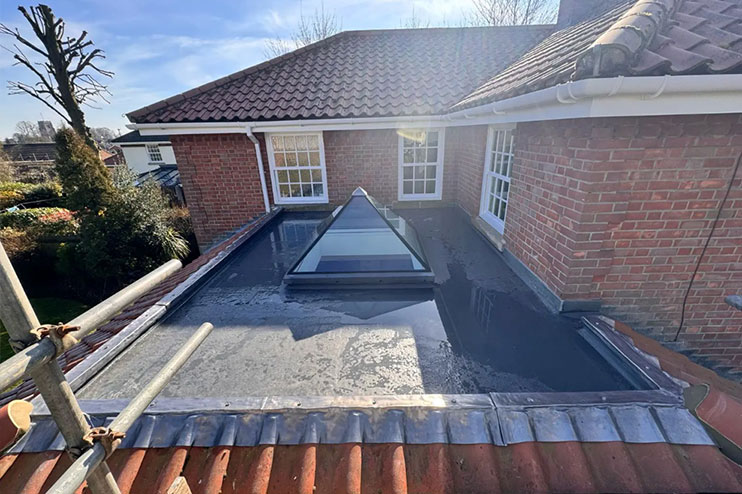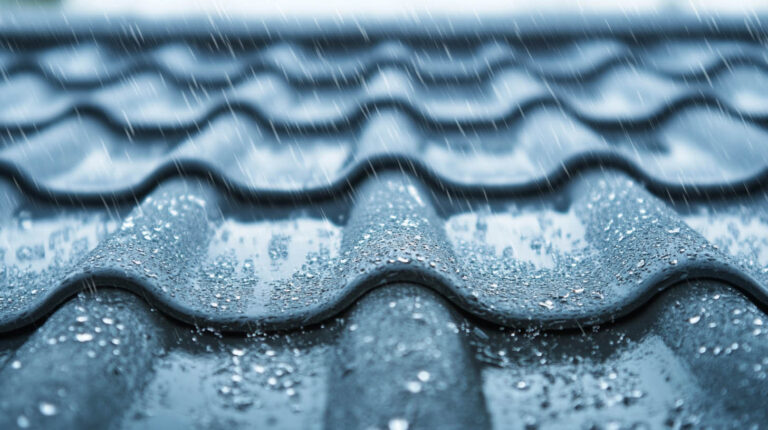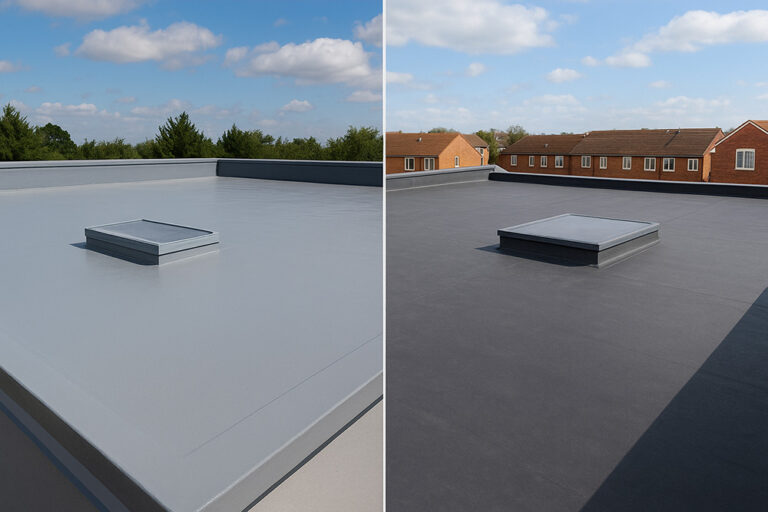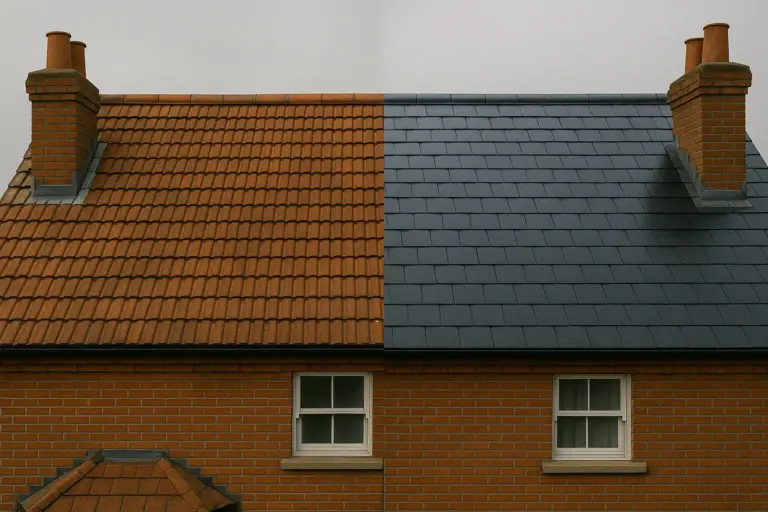With so many options for flat roof replacement available today, choosing the right material is both an investment and a design decision that will affect your property for years. Roof performance, longevity, cost and even curb appeal are shaped directly by the materials involved. Each has strengths, quirks, and best-use scenarios, and making a wise choice means more than just asking ‘what’s cheapest or quickest’.
Let’s examine the leading roofing materials in the UK, considering what sets them apart and why one might suit your project over another.
Why Flat Roofs Remain Popular
Flat roofs are a mainstay across the commercial sector and increasingly popular for modern and mid-century residential designs. Their clean lines, potential for outdoor living, and allowance for skylights, green roofs and solar panels make them a practical option.
Yet, with less natural drainage than pitched designs, they place greater demands on both the material’s durability and installation quality. Standing water, temperature extremes, and plant growth can all present challenges. The right replacement material guards against these issues and extends the building’s lifespan.
Key Considerations Before Choosing Materials
Before getting lost in the details of rubber, asphalt, or fibreglass, it’s sensible to clarify your project’s demands:
- Budget: Upfront costs don’t always reflect the lifetime value. Some materials need less frequent replacement or lower ongoing maintenance.
- Maintenance: Do you want a ‘fit and forget’ system or are you comfortable with periodic inspections and small repairs?
- Climate: UV exposure, rainfall levels and thermal movement affect certain materials more than others.
- Aesthetics: Some flat roofs might be visible from the ground or can become functional terraces—appearance could matter more than you think.
- Building Use: Consider load requirements if you plan green roofing, regular foot traffic or solar installations.
With those aspects in mind, you’re ready to weigh the main replacement options.
Modified Bitumen: Reliable and Familiar
One of the most traditional materials, modified bitumen (felt roofing), has been a staple on British roofs for decades.
Why Homeowners Still Choose Bitumen
- Proven Performance: Familiar and well-understood by roofing professionals.
- Multiple Layers: Built-up felt often involves several layers of bitumen felt, bonded by heat.
- Cost-Effective: Competitive on price, especially for smaller structures.
Shortcomings
- Lifespan: Typically, a high-quality install lasts around 10–20 years.
- Maintenance: Periodic checks needed to spot cracks and blistering.
- Aesthetics: Not always visually appealing where seen from above.
For domestic extensions, garages, or outbuildings, bitumen’s reliability keeps it relevant. Choose an installer who’s experienced and certified: workmanship impacts longevity as much as materials.
EPDM Rubber Roofing: Durable and Modern
Ethylene Propylene Diene Monomer (EPDM) is a synthetic rubber membrane. It’s been increasingly popular for replacing old felt, promising easy installation and unmatched flexibility.
Highlights
- Lifespan: Properly installed EPDM often lasts 25–50 years.
- Low Maintenance: Minimal checks required if seams are well-sealed.
- UV Resistant: Handles Britain’s shifting weather and temperature swings.
- Sustainability: Fully recyclable and low environmental impact in manufacture.
- Lightweight: Suitable even for less robust existing structures.
Points to Consider
- Appearance: Typically black, which absorbs heat but looks neat from eye level.
- Installation: Large sheets reduce seams, but detailing around pipes or skylights requires expertise.
- Cost: Middle of the price spectrum, with emerging demand holding prices steady.
For a long-term, low-maintenance solution, EPDM sits near the top of most shortlists.
PVC and TPO: Single-Ply Solutions
Single-ply membranes, either Polyvinyl Chloride (PVC) or Thermoplastic Olefin (TPO), offer high-tech alternatives, often preferred in larger-scale commercial or new-build projects.
What Sets Single-Ply Apart
- Heat-Welded Seams: These create a watertight barrier, free from adhesives.
- Versatile Colours: Lighter shades reflect solar radiation, helping energy efficiency.
- Chemical Resistant: Well-suited for certain industrial environments.
- Rapid Installation: Speed and uniformity make them attractive for big jobs.
Potential Concerns
- Initial Investment: Often pricier upfront than felt or EPDM.
- Repairs: Damage can be harder to patch without professional tools.
- Not Always DIY-Friendly: Installation requires specific expertise and equipment.
Architects specifying new builds or those seeking high performance from a flat roof often weigh the merits of PVC and TPO carefully, especially where aesthetics and energy performance matter.
GRP (Fibreglass): Sleek and Seamless
Glass-Reinforced Plastic (GRP), or fibreglass roofing, is a tough, seamless system with a contemporary look. Once the preserve of boatbuilding, it has migrated to rooftops with great success.
Standout Features
- Seamless Finish: Entirely continuous surface, reducing risk of leaks.
- Longevity: Often surpasses 25–30 years with minimal degradation.
- Custom Colour Options: Easily pigmented for architecture requiring visual impact.
- Fire Retardant: High resistance to fire makes it suited for urban settings.
Cautionary Notes
- Installation Conditions: Needs dry, mild weather; not suitable for winter installs.
- Movement Sensitivity: Some expansion and contraction issues if not properly installed on the right deck.
- Surface Preparation: The underlying deck must be smooth, strong, and well-prepared.
Suited for both homes and high-profile commercial buildings, GRP ticks many boxes for those who want a durable, attractive solution that stands up to scrutiny.
Green Roofing: Living, Functional and Beautiful
Rising in popularity, living roofs turn a simple weatherproof surface into a haven for wildlife and a natural insulator.
Why Choose Green Roofing
- Biodiversity: Encourages insects, birds and native plants.
- Thermal Performance: Excellent insulation reduces energy costs.
- Aesthetic Value: Adds visual interest, improves outlook, and cuts water run-off.
- Air Quality: Absorbs pollutants, offering environmental benefits.
Essential Requirements
- Structural Support: Usually heavier than traditional roofs.
- Waterproof Membrane: Must be root-resistant and able to cope with plant growth.
- Professional Installation: Requires skill both as a roofer and a garden specialist.
Green roofs are more than a roofing choice: they’re a lifestyle and environmental statement, and investing in the supporting structure is just as vital as choosing the waterproofing layer.
A Comparison Table: Flat Roof Materials at a Glance
Material | Typical Lifespan | Maintenance | Visual Appeal | Installation Skill | Cost Range (£/m2) |
|---|---|---|---|---|---|
Felt/Bitumen | 10–20 years | Moderate | Low | Moderate | 40–60 |
EPDM Rubber | 25–50 years | Low | Moderate | Moderate | 60–90 |
PVC/TPO Single-Ply | 20–35 years | Low | High | High | 80–120 |
GRP/Fibreglass | 25–30 years | Very Low | High | High | 80–130 |
Green Roofing (Sedum) | 30+ years | Moderate | Exceptional | High | 90–150+ |
Values above are average indications; actual costs and results will depend on local market rates, roof complexity, access, and system specification.
Making Smart Choices: Questions to Ask Your Roofer
Choosing a roofing professional with the right experience is half the battle. Here are a few key questions to keep in mind:
- Are they certified for the system you want installed?
- How long has their chosen material and method been in use?
- Can they show local examples or references?
- What guarantees are offered, both in terms of material and workmanship?
- How do they propose to handle details around skylights, pipes, or solar panels?
Being prepared with the right information helps to ensure a positive outcome and fewer unwelcome surprises later.
Sustainability and Modern Trends
Environmental factors now influence many property owners’ decisions. Beyond green roofing, there are materials made from recycled rubber, systems optimised for solar panel integration, and options with higher reflectivity for urban heat reduction.
Even small choices, like lighter membranes or certified sustainable insulation, can tally up to a positive environmental impact over a roof’s lifetime.
Practical Tips for Flat Roof Performance
There are a few golden rules to keep any flat roof working as intended for decades:
- Arrange for annual or semi-annual inspections. Most problems spotted early can be patched easily.
- Keep roof surfaces clear. Remove leaves, dirt and moss regularly, especially around drains.
- Act promptly. If you notice bubbling, ponding, or join failures, get a professional in before minor issues escalate.
No matter the system chosen, a little attention and professional oversight can maintain both function and value across the years.






